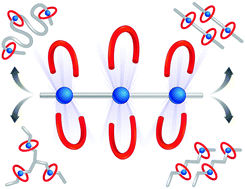Cooperative self-assembly: producing synthetic polymers with precise and concise primary structures†
Abstract
The quest to construct mechanically interlocked

- This article is part of the themed collection: Supramolecular polymers
* Corresponding authors
a
Department of Chemistry, Northwestern University, 2145 Sheridan Road, Evanston, Illinois, USA
E-mail:
stoddart@northwestern.edu
Fax: (+1)-847-491-1009
Tel: (+1)-847-491-3793
b Graduate School of EEWS, Korea Advanced Institute of Science and Technology (KAIST), 373-1 Guseong Dong, Yuseong Gu, Daejeon 305-701, Republic of Korea
The quest to construct mechanically interlocked

 Please wait while we load your content...
Something went wrong. Try again?
Please wait while we load your content...
Something went wrong. Try again?
A. Avestro, M. E. Belowich and J. F. Stoddart, Chem. Soc. Rev., 2012, 41, 5881 DOI: 10.1039/C2CS35167F
To request permission to reproduce material from this article, please go to the Copyright Clearance Center request page.
If you are an author contributing to an RSC publication, you do not need to request permission provided correct acknowledgement is given.
If you are the author of this article, you do not need to request permission to reproduce figures and diagrams provided correct acknowledgement is given. If you want to reproduce the whole article in a third-party publication (excluding your thesis/dissertation for which permission is not required) please go to the Copyright Clearance Center request page.
Read more about how to correctly acknowledge RSC content.
 Fetching data from CrossRef.
Fetching data from CrossRef.
This may take some time to load.
Loading related content
